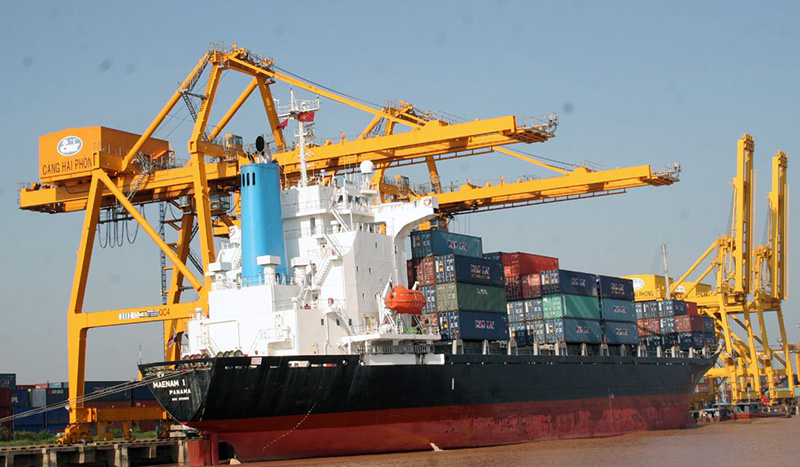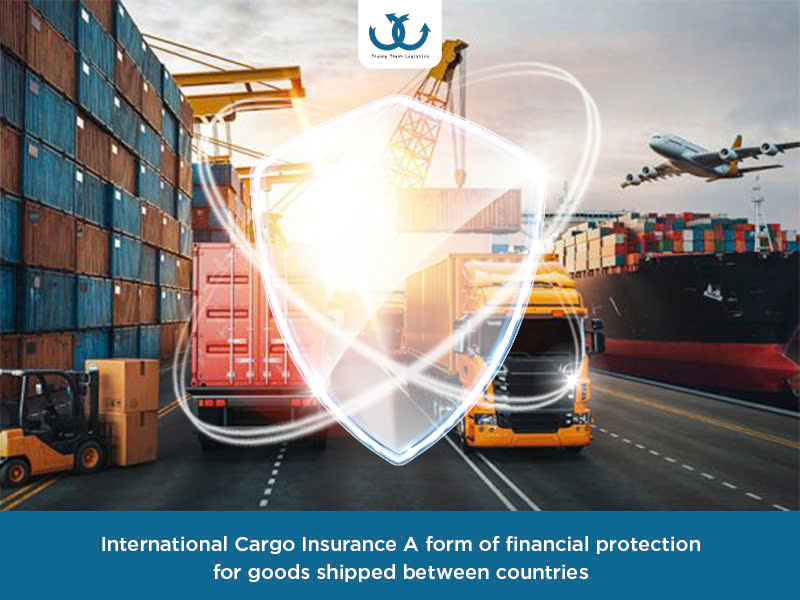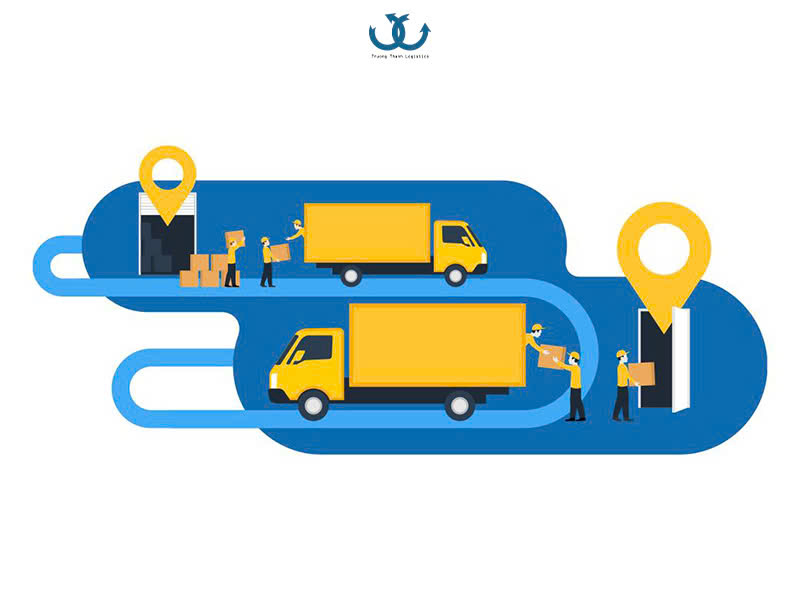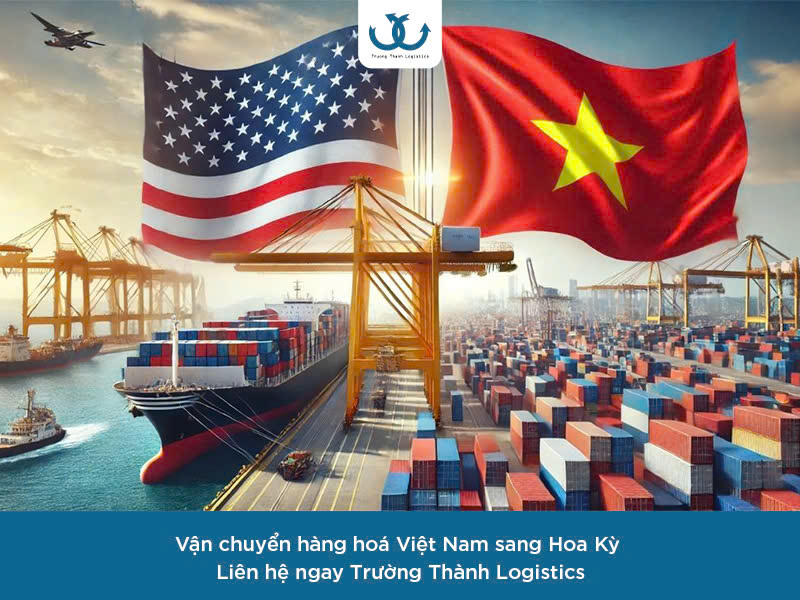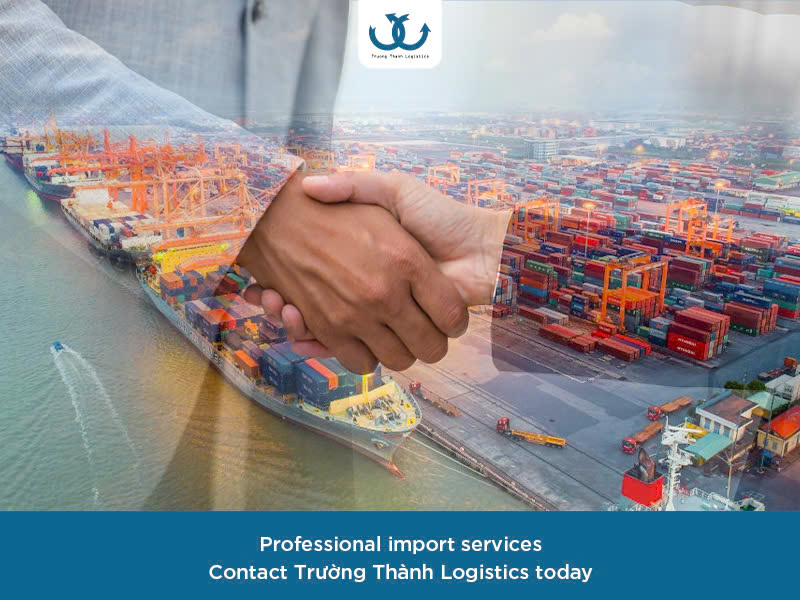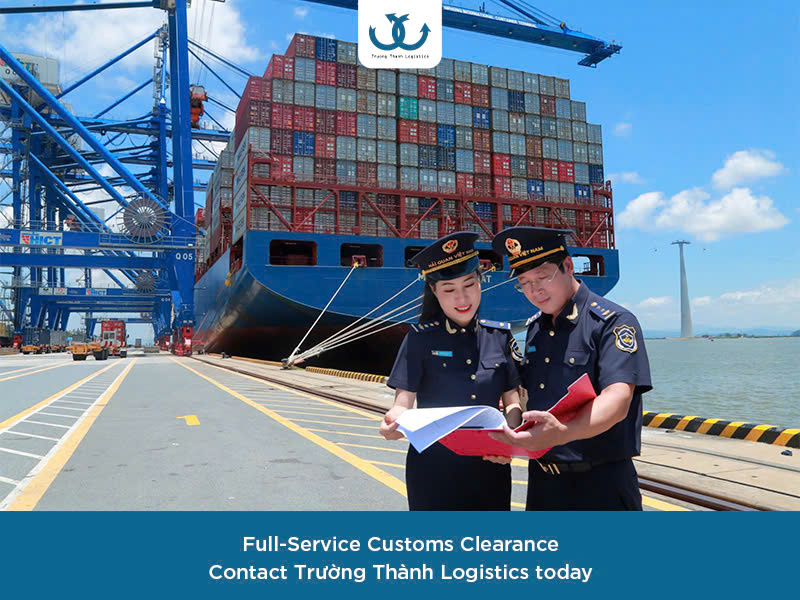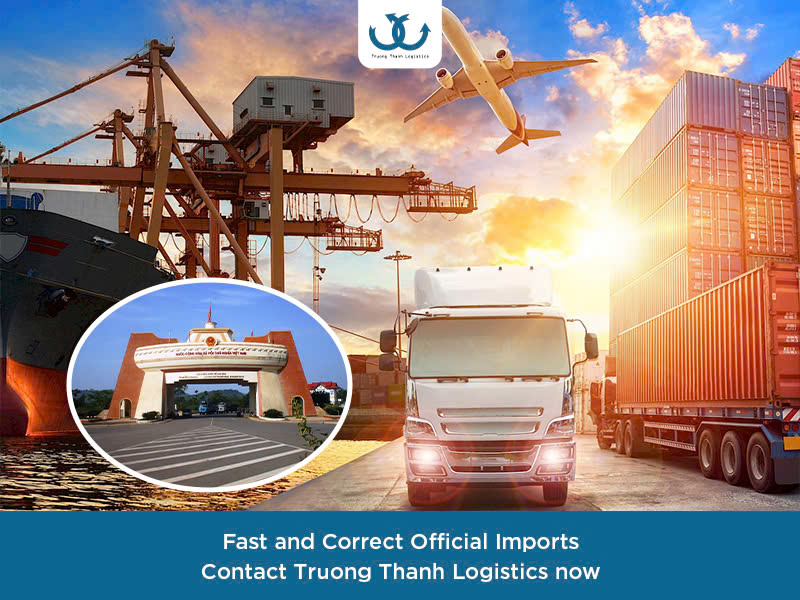In the context of strong global trade growth, international shipping of official goods plays a crucial role in the supply chain of import and export businesses. However, high shipping costs can reduce profitability and competitiveness. How can you optimize these costs while ensuring efficiency and quality?
This article will provide specific strategies, from choosing the right shipping method to applying technology, to help businesses achieve savings and operational efficiency.
1. Official Goods and the Importance of Cost Optimization
Official goods are products that are legally imported and exported, fully complying with customs, tax, and legal regulations. International shipping of these goods typically uses methods such as sea, air, road, or rail, depending on the characteristics of the cargo and delivery requirements.
Optimizing shipping costs not only helps to lower product prices but also enhances a business’s competitiveness in the international market. An effective logistics strategy can improve cash flow, increase profit margins, and build credibility with customers. To achieve this, businesses need to implement comprehensive and systematic solutions.
2. Strategies for Optimizing International Shipping Costs
2.1. Choose the Right Shipping Method
Selecting the appropriate shipping method is the first step to reducing costs while meeting time and quality requirements.
+ Sea Freight: This is the most economical option for large-volume goods that do not require fast delivery. With significantly lower costs compared to air freight, sea shipping is suitable for shipments of raw materials, consumer goods, or machinery.
+ Air Freight: This method is ideal for high-value, lightweight, or urgent goods, but it comes with a much higher cost. Businesses need to carefully consider this option to ensure the cost is justified by the value of the goods.
+ Road and Rail Freight: These are suitable for regional or domestic routes, especially in areas with well-developed infrastructure. These methods are often more economical than air freight but depend on distance and traffic conditions.
By carefully evaluating the specific needs of each shipment, businesses can make an optimal choice, balancing cost and delivery time.
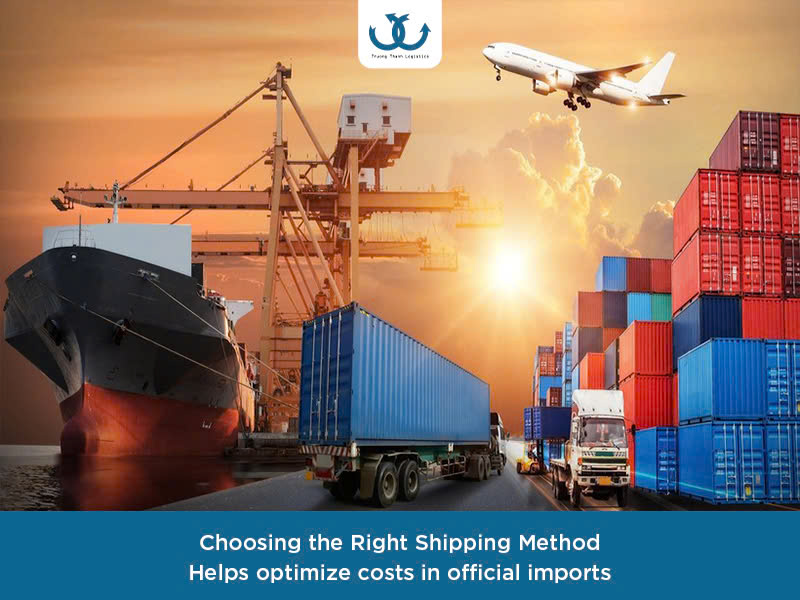
2.2. Optimize the Packaging Process
Packaging not only ensures safety but also directly impacts shipping costs. An efficient packaging process can yield significant benefits.
+ Use Appropriate Packaging: Choose lightweight, durable, and standard-sized materials to reduce weight and optimize space in containers or on pallets.
+ Optimize Space: Pack goods to make the most of the available space, especially when using a full container load (FCL), to avoid wasted space.
+ Comply with International Standards: Ensure that packaging meets international shipping regulations to avoid costs resulting from damage or non-compliance.
An optimized packaging process will help businesses save on shipping costs and reduce risks during transit.
2.3. Partner with Professional Logistics Providers
A reputable logistics partner can provide exceptional value in controlling costs and improving operational efficiency.
+ Compare and Negotiate: Request quotes from multiple logistics providers to find the most competitive prices. Negotiating long-term contracts can also secure attractive discounts.
+ Integrated Services: Large logistics companies often offer all-in-one services, including transportation, customs clearance, and warehousing, which helps to reduce intermediate costs.
+ Assess Capabilities: Choose a partner with experience in international shipping and a deep understanding of the target market to ensure reliable service.
Partnering with the right provider not only saves costs but also ensures a smooth shipping process.
2.4. Apply Technology to Logistics Management
Technology is changing how businesses manage their supply chains, creating opportunities to cut costs and improve efficiency.
+ Transportation Management Systems (TMS): TMS helps optimize shipping routes, reducing waiting times and fuel costs.
+ Real-Time Monitoring: GPS and IoT technology allow for continuous tracking of shipments, minimizing the risk of delays or loss.
+ Data Analytics: Using historical data to forecast demand, optimize shipping schedules, and manage costs more effectively.
Investing in technology may have high initial costs, but in the long run, it is a sustainable solution for reducing expenses and increasing competitiveness.
2.5. Comply with Customs Regulations and Leverage Incentives
Understanding and adhering to customs regulations is a key factor in avoiding unexpected costs.
+ Prepare Complete Documentation: Ensure that commercial invoices, certificates of origin (C/O), and other necessary permits are accurately prepared to prevent customs clearance delays.
+ Leverage Free Trade Agreements (FTAs): Agreements like the EVFTA, CPTPP, or RCEP can help reduce import taxes, thereby lowering overall shipping costs.
+ Accurate Declarations: Errors in customs declarations can lead to fines or delays, so it’s essential to review them carefully before submission.
Being knowledgeable about customs regulations and taking advantage of tax incentives can help businesses save significantly on logistics costs.
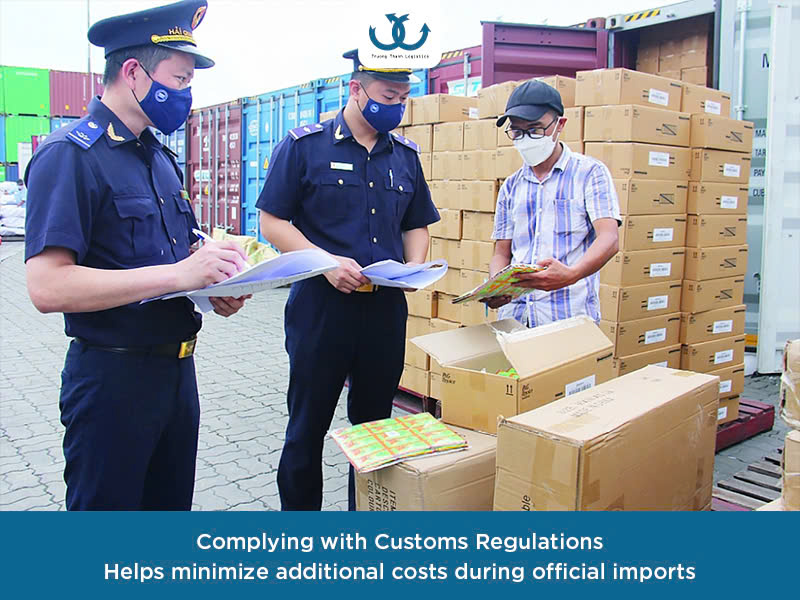
3. Frequently Asked Questions about International Shipping Cost Optimization
+ Q: How do I choose the most suitable shipping method?
A: Businesses should evaluate based on the type of goods, delivery time, and budget. Large-volume, non-urgent goods are best suited for sea freight, while high-value or time-sensitive goods are appropriate for air freight.
+ Q: Should I manage logistics in-house or outsource it?
A: Outsourcing is ideal for small and medium-sized businesses to save on infrastructure investment costs. Large companies may consider in-house management for better control but must weigh the operational costs.
+ Q: How can I effectively leverage FTAs?
A: Research the trade agreements Vietnam is a part of, prepare complete certificates of origin (C/O), and check the list of goods eligible for tax benefits. Contact a logistics partner or customs authority for specific advice.
+ Q: What role does technology play in reducing shipping costs?
A: Technology such as TMS, GPS, and data analytics helps optimize routes, monitor shipments, and forecast costs, thereby reducing waste and increasing efficiency.
+ Q: How can I avoid additional customs fees?
A: Prepare all necessary documents completely and accurately, comply with customs regulations, and leverage benefits from trade agreements to minimize risks.
4. Benefits of Optimizing Shipping Costs
Optimizing international shipping costs brings many practical benefits:
+ Enhanced Competitiveness: Lower product costs help businesses attract more customers.
+ Improved Cash Flow: Saving on logistics costs frees up capital to invest in other areas like marketing or product research.
+ Increased Brand Reputation: On-time delivery at a reasonable cost builds trust with customers and partners.
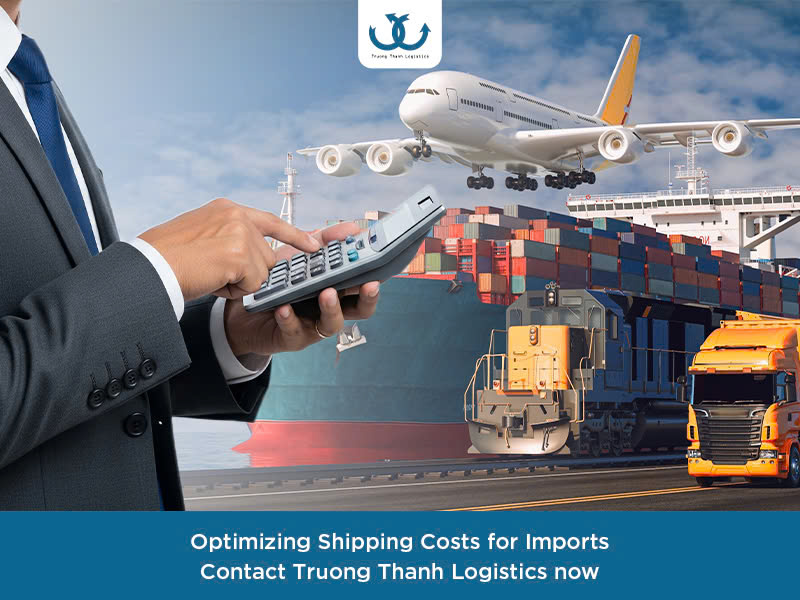
Truong Thanh Logistics – Partnering with Businesses to Optimize Logistics Costs
Truong Thanh Logistics is proud to be a leading provider of international shipping solutions for official goods in Vietnam. With over 13 years of experience in the logistics industry, we offer comprehensive services, from sea and air freight to customs clearance and warehousing management. Our team of experts will assist your business in optimizing costs, ensuring on-time delivery, and complying with all legal regulations.
We are committed to:
+ Professional Service: Providing customized shipping solutions tailored to each type of goods and target market.
+ Competitive Pricing: Offering optimized service packages that help businesses save costs while ensuring quality.
+ Comprehensive Support: Advising and handling customs procedures, making the most of benefits from Free Trade Agreements.
Optimizing international shipping costs for official goods is a crucial strategy for businesses to enhance efficiency and competitiveness in the global market. By choosing the right shipping method, optimizing packaging, partnering with a reliable logistics provider, using technology, and complying with customs regulations, businesses can achieve a balance between cost and quality. Start applying these solutions today to help your business go further in its import-export journey.
For assistance with import and export information, international freight, sea transport or import entrustment, please contact Truong Thanh Logistics at the address:
Truong Thanh Logistics – Dedication, Prestige
Hotline: 0915 36 38 39
Headquarter: 5th Floor, Tower A, Song Da Building, Pham Hung, Tu Liem, Hanoi.
Email: sale@truongthanhjsc.com
info@truongthanhlogistics.com
Website: www.truongthanhlogistics.com
Hai Phong Branch
Address: R.A11, TTC Building, 630 Le Thanh Tong, Hai An, Hai Phong
Da Nang Branch
Address: 27 Nguyen Ba Lan, Ngu Hanh Son Ward, Da Nang.
HCMC Branch
Address: Room 41, 4th floor, Casanova building, 85 Nguyen Son street, Phu Thanh Ward, Ho Chi Minh City




